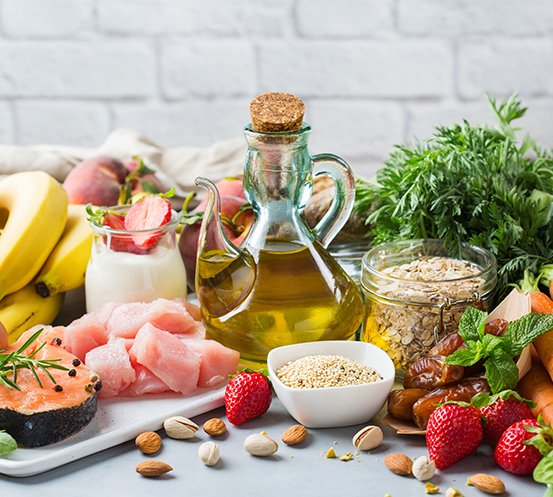สร้างความหลากหลายที่ลงตัวกับผลิตภัณฑ์อาหารจากพืช Perfect Diversifying the Plant-Based Portfolio
796 Views |

By: Christian Philippsen
Managing Director
BENEO Asia Pacific Pte. Ltd.
การสร้างความหลากหลายให้กับผลิตภัณฑ์จากพืช
จากความก้าวหน้าของผู้ผลิตส่วนผสมอาหารต่างๆ ทำให้ตลาดอาหารจากพืชมีการพัฒนาขึ้นมาอย่างต่อเนื่อง เพื่อให้มีรสชาติและเนื้อสัมผัสใกล้เคียงกับอาหารดั้งเดิม ซึ่งเป็นปัจจัยสำคัญสำหรับผู้บริโภค โดยเฉพาะกลุ่มมังสวิรัติแบบยืดหยุ่นที่ต้องการทางเลือกในกลุ่มอาหารจากพืชมากขึ้น
ความก้าวหน้าอีกประการหนึ่ง คือ การพัฒนาส่วนผสมโปรตีนจากข้าวสาลี เพื่อการนำไปประยุกต์ใช้งานได้อย่างหลากหลาย และเหมาะสมอย่างยิ่งต่อการนำไปใช้ในผลิตภัณฑ์เนื้อเทียมที่ประกอบไปด้วยโปรตีนอย่างน้อย ร้อยละ 65 (ของน้ำหนักแห้ง) และมีโครงสร้างเฉพาะที่ช่วยให้เนื้อสัมผัสมีความชุ่มฉ่ำคล้ายกับเนื้อสัตว์ โดยโปรตีนชนิดนี้ใช้เวลาแช่น้ำเพียง 5 -15 นาทีเท่านั้น ลดระยะเวลาและสะดวกต่อการนำมาใช้ในการผลิต นอกเหนือจากการนำมาใช้ในผลิตภัณฑ์ที่ปราศจากเนื้อสัตว์เพื่อให้ได้เนื้อสัมผัสที่เสมือนจริงในรูปแบบเม็ดหรือเส้นใยแล้ว ส่วนผสมโปรตีนจากข้าวสาลี2 นี้ยังเสริมรสชาติที่หลากหลาย เพิ่มส่วนผสมสมุนไพรและเครื่องเทศต่างๆ ได้เพื่อการสร้างสรรค์อาหารจากพืชรูปแบบต่างๆ
เนื่องจากความต้องการอาหารจากพืชมีความหลากหลายและเพิ่มขึ้นอย่างต่อเนื่อง ผลิตภัณฑ์เนื้อสัตว์และปลาทางเลือกหลายรูปแบบจึงได้ถูกพัฒนาขึ้น และเพื่อตอบสนองความต้องการที่เพิ่มขึ้นนี้ ผู้ผลิตอาหารจึงมองหาส่วนผสมจากพืชที่ใช้งานได้หลายรูปแบบเพื่อเพิ่มคุณสมบัติทางประสาทสัมผัส รสชาติ ลักษณะปรากฎ กลิ่นและเนื้อสัมผัส และเพื่อตอบสนองคุณสมบัติดังกล่าว จึงเกิดการสร้างโซลูชันที่ผสมผสานระหว่างส่วนผสมจากพืชที่มีความแตกต่างกันอย่างลงตัว โดยบริษัทส่วนผสมอาหารแห่งหนึ่ง1 ได้พัฒนาส่วนผสมทางเลือกจากพืชที่หลากหลาย พร้อมเพิ่มส่วนผสมล่าสุดจากโปรตีนถั่วฟาบาเข้มข้น
Broadening the Plant-Based Toolbox
Recent advancements by ingredient manufacturers have enabled the plant-based market to evolve immensely, with alternatives having a similar taste and texture to original foods — a crucial factor for consumers, especially flexitarians, when selecting plant-based options.
One such advancement is the development of a textured wheat protein2 which can be used in a wide range of applications and is especially ideal for use in meat analogue products. It contains at least 65% protein (on dry matter) and has a unique alveolar structure that allows for the development of a meat-like juicy texture. The protein only takes 5 to 15 minutes to hydrate, eliminating the need for long soaking durations and making it convenient for production. In addition to enabling the creation of meat-free products with a meaty texture and a granular, fibrous structure, textured wheat protein2 can be flavoured with a variety of tastes, herbs, and spices — making it a flexible meat substitute.
As the appetite for a more diverse range of plant-based foods continues to grow, a wider variety of meat and fish alternatives are now being created. To meet this increase in demand, food manufacturers are seeking ingredients with more versatility to increase their plant-based product’s organoleptic profile (its taste, sight, smell, and touch) as well as texture. In order to really create a convincing organoleptic profile, it is often about the combination of different plant-based ingredient solutions. To assist in this process, a food ingredient company1 has a broad toolbox of ingredients available, with the more recent portfolio extensions being faba bean protein concentrates.






